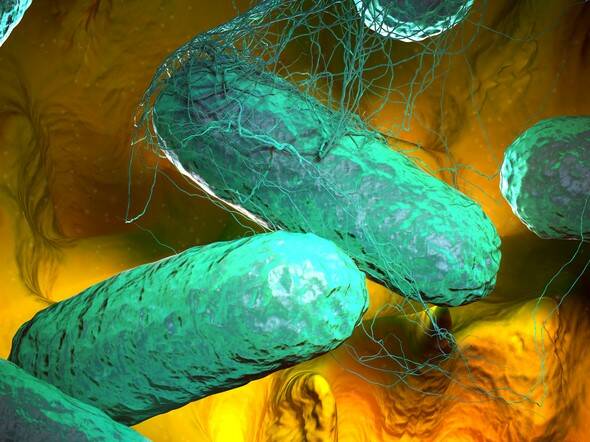- Acute Communicable Disease Control, 2016 Annual Morbidity Report (2016). "TYPHOID FEVER, ACUTE AND CARRIER" (PDF). Los Angeles County Department of Public Health. p. 133.
- Wain J, Hendriksen RS, Mikoleit ML, Keddy KH, Ochiai RL (March 2015). "Typhoid fever". Lancet. 385 (9973): 1136–45.
- Newton AE (2014). "3 Infectious Diseases Related To Travel". CDC health information for international travel 2014: the yellow book. ISBN 9780199948499.
- "Typhoid Fever". cdc.gov. May 14, 2013.
- "Typhoid Fever". cdc.gov. May 14, 2013.
- "Typhoid vaccines: WHO position paper" (PDF). Relevé Épidémiologique Hebdomadaire. 83 (6): 49–59. February 2008.
- Pitzer VE, Meiring J, Martineau FP, Watson CH, Kang G, Basnyat B, Baker S (October 2019). "The Invisible Burden: Diagnosing and Combatting Typhoid Fever in Asia and Africa". Clinical Infectious Diseases. 69 (Suppl 5): S395–S401.
- Crump JA, Mintz ED (January 2010). "Global trends in typhoid and paratyphoid Fever". Clinical Infectious Diseases. 50 (2): 241–6.
- Näsström E, Parry CM, Thieu NT, Maude RR, de Jong HK, Fukushima M, et al. (2017). Reproducible diagnostic metabolites in plasma from typhoid fever patients in Asia and Africa. Umeå universitet, Kemiska institutionen. OCLC 1234663430.
- Milligan R, Paul M, Richardson M, Neuberger A (May 2018). "Vaccines for preventing typhoid fever". The Cochrane Database of Systematic Reviews. 5: CD001261.
- Chatham-Stephens K, Medalla F, Hughes M, Appiah GD, Aubert RD, Caidi H, et al. (January 2019). "Emergence of Extensively Drug-Resistant Salmonella Typhi Infections Among Travelers to or from Pakistan - United States, 2016-2018". MMWR. Morbidity and Mortality Weekly Report. 68 (1): 11–13.
- Vos T, Allen C, Arora M, Barber RM, Bhutta ZA, Brown A, et al. (GBD 2015 Disease and Injury Incidence and Prevalence Collaborators) (October 2016). "Global, regional, and national incidence, prevalence, and years lived with disability for 310 diseases and injuries, 1990-2015: a systematic analysis for the Global Burden of Disease Study 2015". Lancet. 388 (10053): 1545–1602
- Jackson BR, Iqbal S, Mahon B (March 2015). "Updated recommendations for the use of typhoid vaccine--Advisory Committee on Immunization Practices, United States, 2015". MMWR. Morbidity and Mortality Weekly Report. 64 (11): 305–8.
- Wang H, Naghavi M, Allen C, Barber RM, Bhutta ZA, Carter A, et al. (GBD 2015 Mortality and Causes of Death Collaborators) (October 2016). "Global, regional, and national life expectancy, all-cause mortality, and cause-specific mortality for 249 causes of death, 1980-2015: a systematic analysis for the Global Burden of Disease Study 2015". Lancet. 388 (10053): 1459–1544.
- Abubakar II, Tillmann T, Banerjee A, et al. (GBD 2013 Mortality and Causes of Death Collaborators) (January 2015). "Global, regional, and national age-sex specific all-cause and cause-specific mortality for 240 causes of death, 1990-2013: a systematic analysis for the Global Burden of Disease Study 2013". Lancet. 385 (9963): 117–71.
Typhoid fever: What is typhoid and how does it manifest? Will vaccination help?

Photo source: Getty images
Most common symptoms
- Malaise
- Sweating
- Tremors
- Abdominal Pain
- Headache
- Muscle Pain
- Lower Abdominal Pain
- Fever
- Nausea
- Constipation
- Black stool
- Rash
- Excessive Hair Loss: Causes, Treatment
- Bloating - flatulence
- Indigestion
- Low blood pressure
- Disorders of consciousness
- Buds
- Bone thinning
- Slowed heartbeat
- Stool with blood - blood in the stool
- Dry cough
- Fatigue
- Vomiting
- Vomiting blood
- Winterreise
- Confusion
- Enlarged lymph nodes
- Liver enlargement
Show more symptoms ᐯ
Typhoid fever and its treatment, medication and antibiotics
Show moreTyphoid fever is treated by
Typhoid fever is examined by
Other names
Typhus abdominalis, typhoid fever, enteric fever










